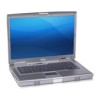Dell Precision M70 User's Guide - Page 35
Resolving Software and Hardware Incompatibilities, Using Microsoft, Windows, XP System Restore
 |
View all Dell Precision M70 manuals
Add to My Manuals
Save this manual to your list of manuals |
Page 35 highlights
9. When the name of the appropriate driver appears, click Next. 10. Click Finish and restart your computer. Manually Reinstalling Drivers for Windows 2000 NOTE: If you are reinstalling an infrared driver, you must first enable the infrared sensor in the system setup program before continuing with the driver installation. 1. After copying the driver files to your hard drive, click the Start button, point to Settings, and then click Control Panel. 2. Double-click the System icon. 3. Click the Hardware tab. 4. Click Device Manager. 5. Double-click the type of device for which you are installing the driver (for example, Modems or Infrared devices). 6. Double-click the name of the device. 7. Click the Driver tab and click Update Driver. 8. Click Next. 9. Ensure that Search for a suitable driver for my device (recommended) is selected, and then click Next. 10. Ensure that the Specify a location check box is checked and that all other check boxes are unchecked, and click Next. 11. Click Browse to browse to the location to which you previously copied the driver files. 12. When the name of the appropriate driver appears, click Next. 13. Click Finish and restart your computer. Resolving Software and Hardware Incompatibilities If a device is either not detected during the operating system setup or is detected but incorrectly configured, you can use the Hardware Troubleshooter to resolve the incompatibility. Windows XP To resolve incompatibilities using the Hardware Troubleshooter: 1. Click the Start button and click Help and Support. 2. Type hardware troubleshooter in the Search field and click the arrow to start the search. 3. Click Hardware Troubleshooter in the Search Results list. 4. In the Hardware Troubleshooter list, click I need to resolve a hardware conflict on my computer, and click Next. Using Microsoft® Windows® XP System Restore The Microsoft® Windows® XP operating system provides System Restore to allow you to return your computer to an earlier operating state (without affecting data files) if changes to the hardware, software, or other system settings have left the computer in an undesirable operating state. See the Windows Help and Support Center for information on using System Restore. NOTICE: Make regular backups of your data files. System Restore does not monitor your data files or recover them. NOTE: The procedures in this document were written for the Windows default view, so they may not work if you set your Dell™ computer to the Windows Classic view.















